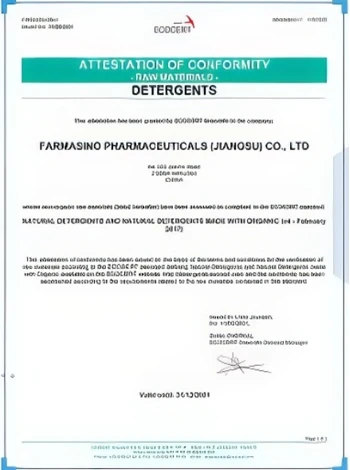



chemical treatment for chilled water system
Chemical Treatment for Chilled Water Systems Ensuring Efficiency and Longevity
Chilled water systems are a crucial component of modern heating, ventilation, and air conditioning (HVAC) systems. These systems are essential in maintaining comfortable indoor environments in commercial and industrial settings. However, the efficiency and longevity of chilled water systems can be severely affected by various factors, including corrosion, scaling, biological growth, and fouling. To address these challenges, chemical treatment is employed as a vital solution.
Understanding Chilled Water Systems
Chilled water systems work by circulating water that has been cooled through a refrigeration cycle, which removes heat from a given environment. This cold water is then used for air conditioning and cooling processes in buildings. Regular maintenance and management of these systems are necessary for optimal performance, and chemical treatment plays a significant role in this regard.
The Importance of Chemical Treatment
Chemical treatment encompasses a wide range of practices aimed at controlling issues that can compromise the efficiency of chilled water systems. Key benefits of utilizing chemical treatments include
1. Corrosion Control Corrosion is one of the most significant threats to chilled water systems. It can lead to premature failure of pipes, chillers, and other critical components. Chemical inhibitors, such as phosphonates and azoles, are commonly used to form a protective layer on metal surfaces, reducing the oxidation process and prolonging equipment life.
2. Scale Prevention Hard water often contains high levels of calcium and magnesium, which can precipitate and form scale deposits on system components. Scaling can severely hinder heat exchange processes, reducing efficiency and increasing energy consumption. Chemicals such as polyacrylic acids and phosphate-based compounds are routinely employed to inhibit scale formation and keep systems running smoothly.
3. Biological Control Biological growth, including algae, bacteria, and fungi, can thrive in warm, nutrient-rich water systems. These organisms can create biofilms, which not only lead to fouling but can also produce harmful toxins. Biocides, such as bromine and chlorine compounds, are used to control biological growth and maintain system hygiene.
chemical treatment for chilled water system

4. Fouling Control Particles and debris can accumulate within the system, leading to fouling of heat exchangers and pipes. This accumulation affects heat transfer and can cause mechanical failures. Continuous chemical treatment helps to disperse and remove these particulates, ensuring smooth water flow and efficient operation.
Choosing the Right Chemical Treatment
When selecting a chemical treatment approach for a chilled water system, facility managers must consider several factors
- Water Quality Conducting a water analysis can help determine the specific needs of the system. Understanding parameters like pH, conductivity, hardness, and biological load is essential for selecting appropriate chemicals. - System Design Every chilled water system has unique characteristics, including material compatibility and flow rates. Chemical treatments should be compatible with the system materials to avoid damage.
- Regulatory Compliance Many regions have regulations concerning the use of certain chemicals, especially biocides. It is crucial to ensure that the chosen chemical treatments are compliant with local environmental regulations.
Implementation and Monitoring
Successful chemical treatment relies not only on the proper selection of chemicals but also on their accurate dosage and monitoring. Routine testing of water quality is essential to ensure that the chemical levels remain effective without causing harm to the system or the environment. Additionally, regular maintenance checks are crucial to identify any emerging issues before they escalate.
Conclusion
Chemical treatment is an integral part of managing chilled water systems effectively. By addressing corrosion, scaling, biological growth, and fouling, chemical treatments help maintain the efficiency and longevity of these systems. Proper implementation of chemical strategies, combined with ongoing monitoring and maintenance, ensures that chilled water systems can continue to provide reliable cooling for years to come. In this way, facility managers can protect their investments and contribute to sustainable building operations.
-
Why Sodium Persulfate Is Everywhere NowNewsJul.07,2025
-
Why Polyacrylamide Is in High DemandNewsJul.07,2025
-
Understanding Paint Chemicals and Their ApplicationsNewsJul.07,2025
-
Smart Use Of Mining ChemicalsNewsJul.07,2025
-
Practical Uses of Potassium MonopersulfateNewsJul.07,2025
-
Agrochemicals In Real FarmingNewsJul.07,2025
-
Sodium Chlorite Hot UsesNewsJul.01,2025










